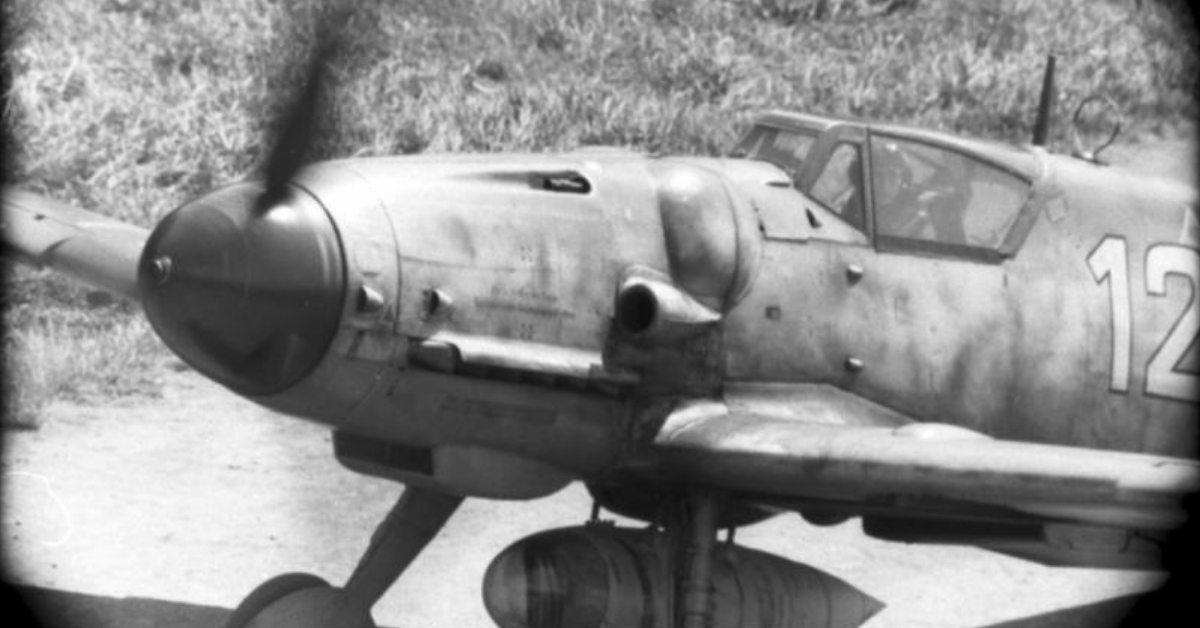The most famous German fighter plane of the Second World War, the Messerschmitt Bf109 played a hugely important part in that conflict.
First Flight
The first flight by a Messerschmitt Bf109 took place in September 1935. At the time, Germany was rearming, as it cast off the restrictions imposed in the aftermath of the First World War. The creation of machines like the Bf109 was part of this rearmament.
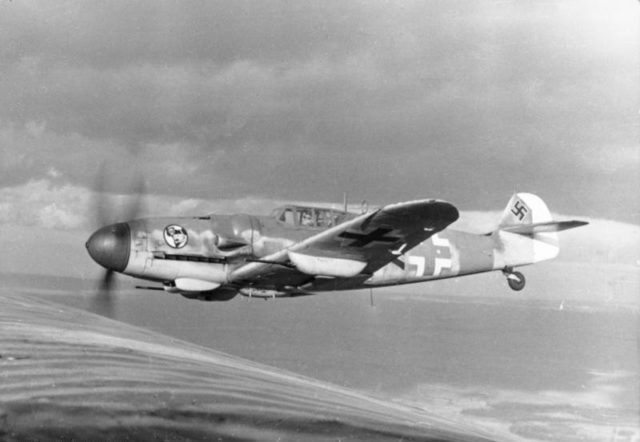
Starting with a British Engine
At the time of the Bf109’s creation, relations between Britain and Germany were still good. Early models were therefore powered by a British engine – the Rolls-Royce Kestrel.
https://youtu.be/R59SOXW-NtY
Building on the Bf108
Some features of the Bf109 came from a previous plane, the Bf108. However, their purposes were very different. The Bf108 was a four-seater touring plane, while the Bf109 was a single seat fighter.
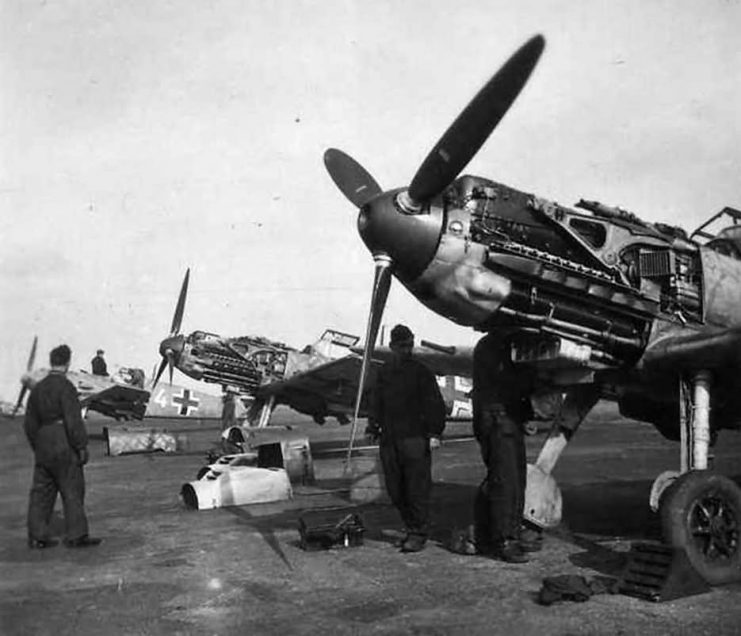
First Deployment
The first Bf109s provided to the Luftwaffe were a set of Bf109Bs delivered in 1937. These went to Jagdgeschwader 132 “Richthofen”, an elite formation named after the greatest fighter ace of the First World War, the “Red Baron” Manfred von Richthofen.
First Combat
The Bf109 first saw fighting in the Spanish Civil War, as a tool of the Condor Legion. This was a German force sent to support General Franco’s coup against the left-wing government.
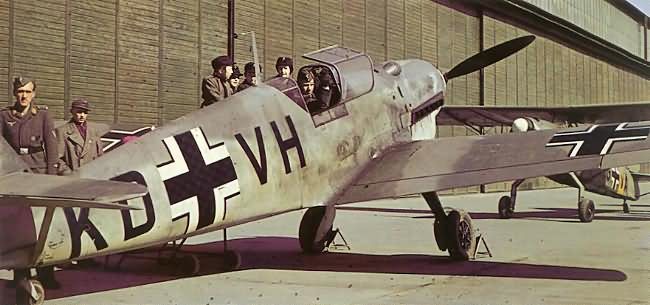
The fighting in Spain was invaluable. Pilots gained vital experience flying the Bf109 and engineers gained information that led to improvements in later models. Their work also helped to secure the regime of Franco, and so avoid a left-wing government that might have sided against the Axis in the Second World War.
A Record Breaker
In November 1937, a Bf109 reached a speed of 379.38mph, breaking the high-speed record for a landplane.
Model E
The definitive version of the Bf109 was the model E, affectionately known as the Emil. This fast, maneuverable plane first entered service in 1938. By the start of the Second World War, around 1,000 of them were in use by the Luftwaffe.
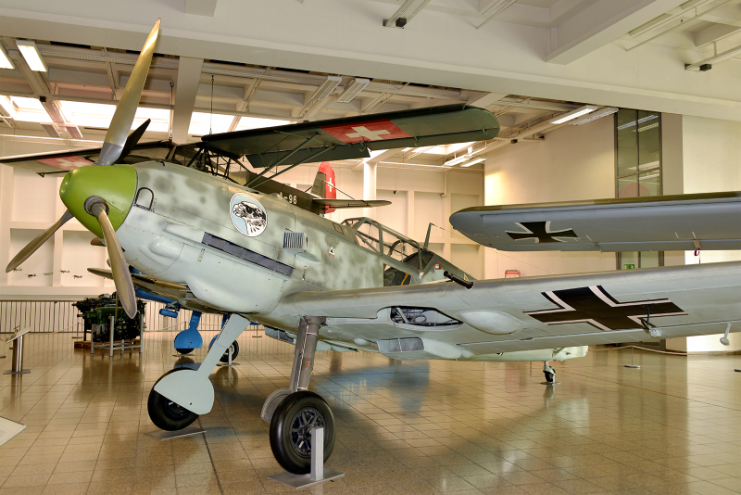
A Top Early War Fighter
The Bf109E played a prominent part in the early air battles of the war, including during the Blitzkrieg in Poland, the invasion of France, and the Battle of Britain. During this time, it was superior to every enemy fighter except the equally famous Supermarine Spitfire.
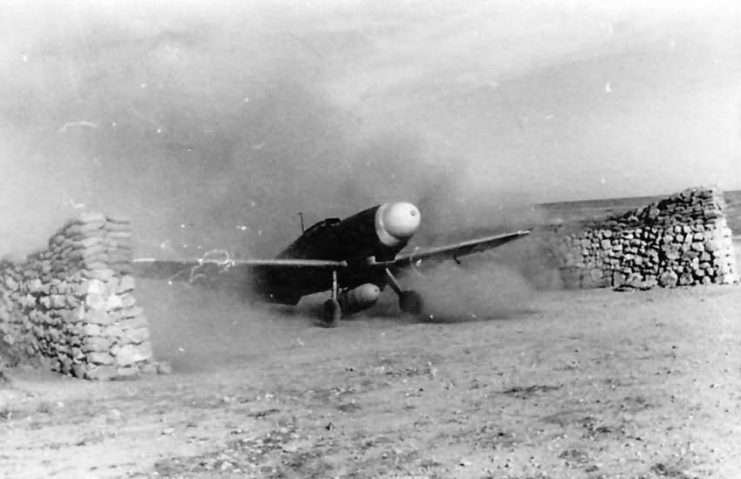
Advantages Over the British: Weapons
Many of the Bf109E’s fiercest fights took place against British planes, in particular the Spitfire and the Hawker Hurricane. These two planes were the best the British had for much of the war and made up the largest part of their fighter fleet during the Battle of Britain.
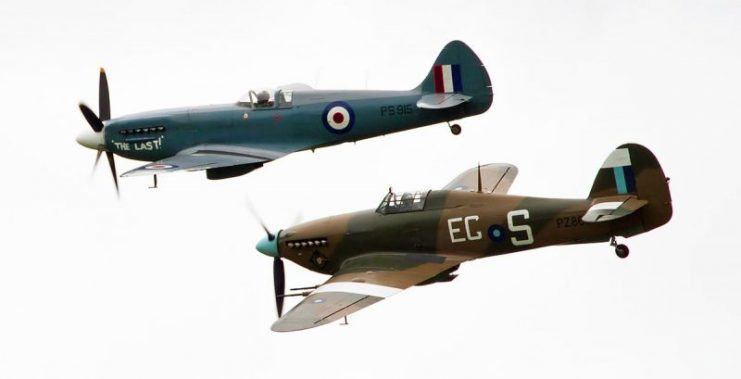
The Bf109E won many fights against both Spitfires and Hurricanes. This was possible thanks to two main advantages. One was that it carried cannons, while the British early war planes had only machine-guns firing rifle-caliber bullets. As a result, the Bf109E had a better range and caused more destruction than its opponents.
Advantages Over the British: Engines
The other advantage came from the Bf109E’s Daimler-Benz engine. This had a fuel-injection system that maintained a steady supply of fuel no matter what maneuvers the pilot put the plane through.
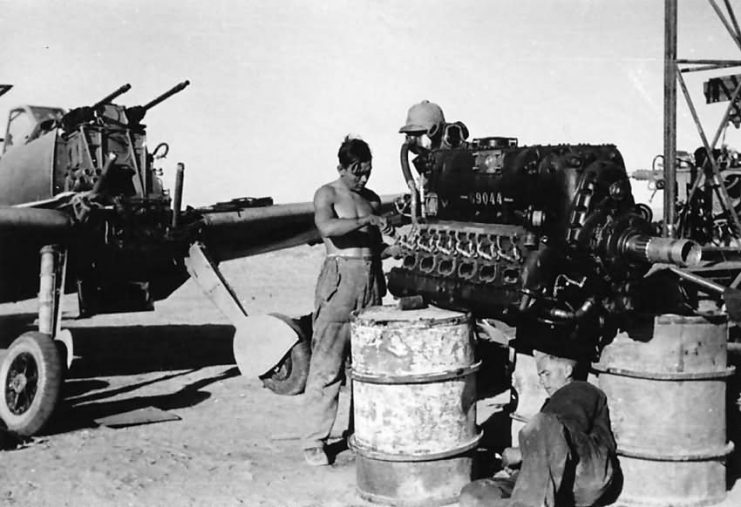
The British fighters, on the other hand, had Merlin engines which would briefly lose their fuel supply if they entered a steep dive. This left British pilots temporarily without power, a serious problem in a frantic aerial battle. The British were forced to develop special maneuvers to avoid this until they got better engines.
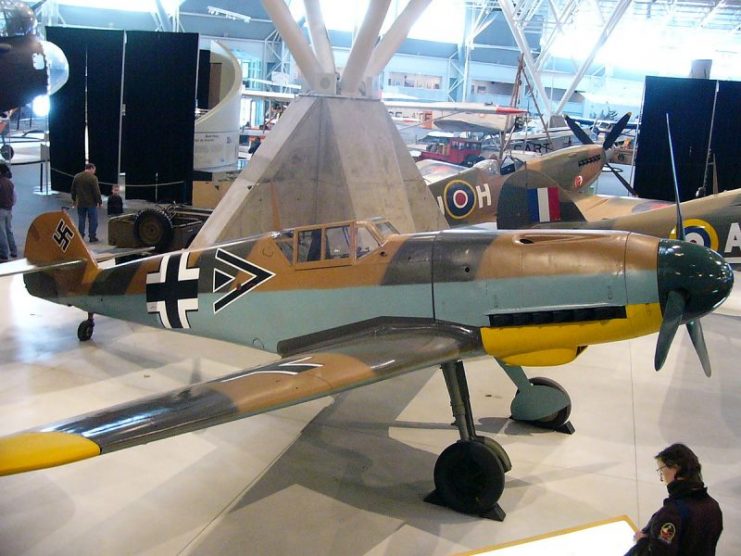
Model F
Though the E was the defining model of Bf109, the version that followed it was the best. The model F’s high speed and all-round top performance made it one of the best planes of the war. It outclassed the Mark V Spitfire, which from 1941 gave the British an edge in aerial battles. The Bf109F also spearheaded the German invasion of the Soviet Union.
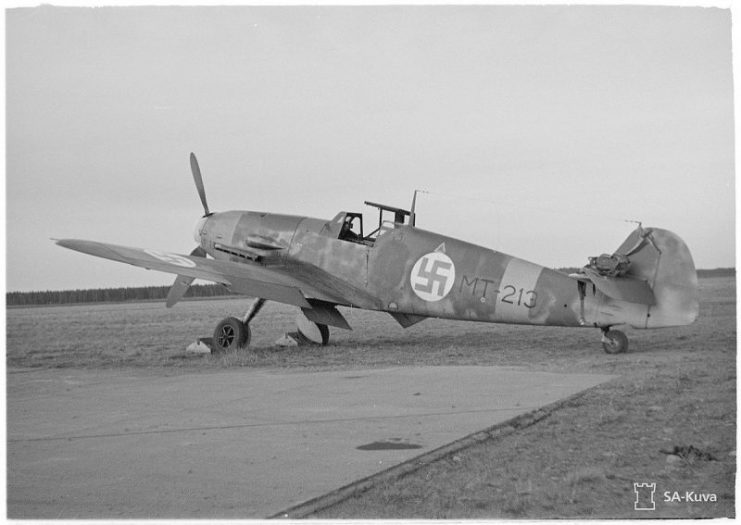
Model G
The model F was followed in 1942 by the model G. This became the standard version in use by the Luftwaffe and so the most common Bf109. It was a well-armed plane that could be used as an interceptor, ground-attack plane, or fighter-bomber.
While hard-hitting, the model G had a serious disadvantage. It was more difficult to control than its predecessor, taking up more of the pilot’s attention, and it was particularly hard to land well.
Different Versions
A variety of different models of the Bf109 saw service. The E-4/B was a fighter-bomber used during the Battle of Britain. A tropicalized version of the E model fought in North Africa. A wide range of different weapons were fitted to Bf109s to suit them to different circumstances.
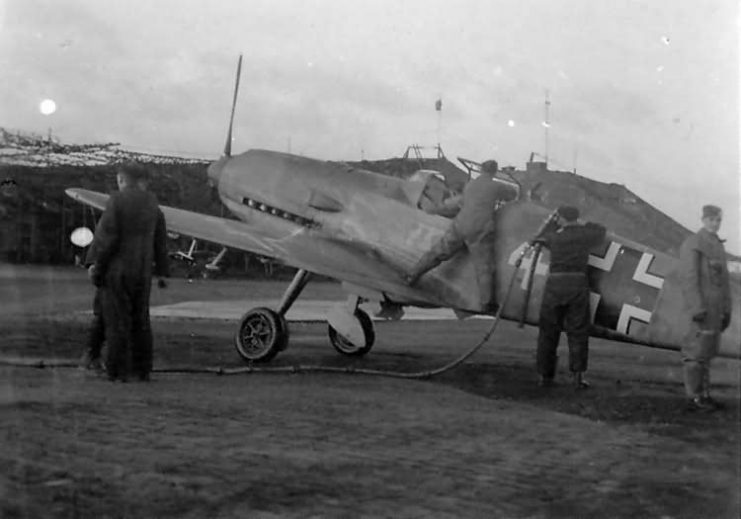
Outlasting Its Originator
The Bf109 lasted over a decade longer than the regime that had it built. Czech firm Avia still had a working factory tooled for Bf109s at the end of the war, and so kept them in production. The Spanish built their own, while the Israelis bought Bf109s and used them in combat in 1948. In a moment of stark irony, a Nazi-designed plane was used to defend the Jewish homeland.
German Plane, Spanish Build, British Engine
One of these late versions of the Bf109 was the Buchon, a name meaning pigeon. Built in Spain and featuring a British Rolls-Royce Merlin engine, it was an unexpected creation of all three sides of the former war – Axis plane, Allied engine, and built in a neutral nation. It was still in service in the mid-1950s.
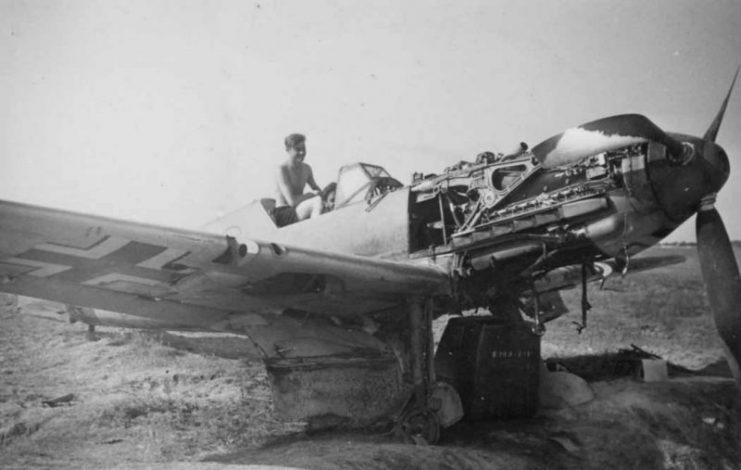
End of an Era
The last Bf109 to be built had its maiden flight in 1956. Eleven years after the war that made it famous, this plane was reaching its end.
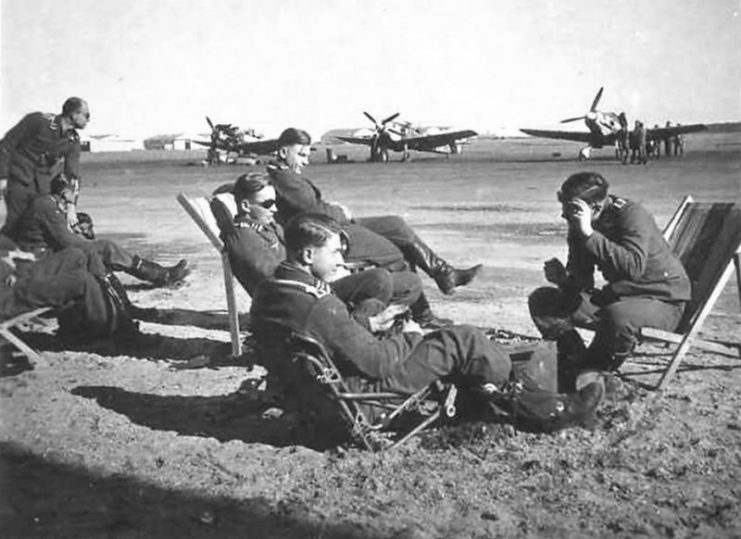
Thousands of Them
In total, more than 35,000 Bf109s were produced over the course of two decades.
